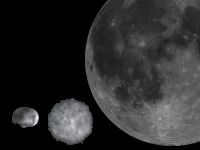
Asteroid – A celestial body in the solar system that orbits the Sun and resembles a small planet. Asteroids, which are also referred to as small planets or minor planets, are significantly smaller in size compared to regular planets.
Meanings
The term asteroid was coined by William Herschel because these celestial objects resembled stars when viewed through a telescope, as opposed to planets which appear as disks. The definition of an asteroid is still not universally agreed upon. The term “minor planet” or “planetoid” is not sufficient for categorizing asteroids, as it implies their position within the solar system. It should be noted that not all asteroids are considered minor planets.
One method of categorizing asteroids is through the measurement of their size. The current classification system distinguishes asteroids as celestial bodies with a diameter exceeding 50 meters, differentiating them from meteoroids, which resemble large rocks or may even be smaller. This classification is based on the premise that asteroids have the ability to withstand re-entry into the Earth’s atmosphere and reach its surface, while meteors typically burn up entirely upon entering the atmosphere.
Consequently, an “asteroid” can be defined as a solid astronomical object within the solar system that surpasses the size of a meteor.
The Solar System’s Asteroids
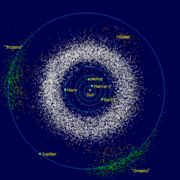
There have been numerous discoveries of asteroids in the solar system up to now. As of September 26, 2006, the databases contained 385083 objects, out of which 164612 have precise orbits and have been given an official number. [1] At that time, 14077 of them had been officially named. [2] It is estimated that there could be between 1.1 and 1.9 million objects larger than 1 km in the solar system. [3] The majority of the currently known asteroids are concentrated in the asteroid belt situated between the orbits of Mars and Jupiter.
The largest asteroid in our Solar System was previously believed to be Ceres, with dimensions of approximately 975×909 km. However, it was reclassified as a dwarf planet on August 24, 2006. The other two largest asteroids, 2 Pallada and 4 Vesta, have diameters of around 500 km. Out of these, 4 Vesta is the only asteroid in the belt that can be seen with the naked eye. Additionally, asteroids in different orbits can be observed when they pass close to Earth, such as 99942 Apophis.
The combined mass of all the asteroids in the main belt is estimated to be between 3.0-3.6×10,21 kg, which is only about 4% of the Moon’s mass. Ceres itself has a mass of 0.95×10 21 kg, accounting for approximately 32% of the total. When combined with the three largest asteroids – 4 Vesta (9%), 2 Pallada (7%), and 10 Hygeia (3%) – these four asteroids make up the majority, totaling 51%. This means that the remaining asteroids have a negligible mass in comparison.
Research on Asteroids
The exploration of asteroids commenced following the revelation of the planet Uranus by William Herschel in 1781. It was observed that its average distance from the sun aligned with the Titius-Bode rule.
In the late 18th century, Franz Xaver von Zach formed a team of 24 astronomers. Starting from 1789, this team embarked on a quest to discover a new planet that, according to the Titius-Bode rule, was expected to be located approximately 2.8 astronomical units away from the Sun – between the orbits of Mars and Jupiter. Their mission was to record the coordinates of all stars within the zodiacal constellations at a specific moment. On subsequent nights, they would recheck the coordinates and identify any objects that had moved further away. The expected displacement of the sought-after planet was estimated to be around 30 angular seconds per hour, making it easily detectable.
Interestingly enough, the initial asteroid, 1 Ceres, was stumbled upon by chance in 1801 by an Italian astronomer named Piazzi, who had no direct involvement in the project. This fortuitous discovery took place on the very first night of the new century. In the subsequent years, three more asteroids were found, namely 2 Pallada, 3 Juno, and 4 Vesta, with Vesta being the last one to be identified in 1807. Following a fruitless search that spanned eight years, most astronomers concluded that there were no more celestial bodies of this kind to be found and subsequently ceased their exploration efforts.
However, Carl Ludwig Henke, undeterred, persisted in his quest for new asteroids and resumed his search in 1830. After five years of relentless searching, he made a groundbreaking discovery – Astrea, which was the first new asteroid to be found in nearly four decades. Less than two years later, he also uncovered Geba. This remarkable achievement inspired other astronomers to join the search, resulting in the discovery of at least one new asteroid per year thereafter (with the exception of 1945).
In 1891, Max Wolf revolutionized the field of asteroid discovery by introducing the use of astrophotography. This innovative technique involved capturing long exposure photographs of the night sky, which revealed short bright lines left by asteroids. Compared to traditional visual observation methods, the use of astrophotography significantly increased the number of asteroid detections. Max Wolf himself discovered a remarkable 248 asteroids, starting with 323 Brutii, surpassing the total number of discoveries made prior to his breakthrough. However, despite these advancements, the identification, numbering, and naming of asteroids remains a relatively limited endeavor. While there are certainly many more asteroids that have been observed, scientists have not placed a significant emphasis on studying them, often referring to them as the “vermin of the skies”.
Rename of Asteroids
In the early days, asteroids were primarily named after legendary figures from Roman and Greek mythology. However, as time went on, discoverers were granted the privilege to assign names of their own choosing, including their own names. Initially, asteroids were predominantly given female names, with the exception of those with unique orbits, such as Icarus, which is closer to the Sun than Mercury. However, this practice was eventually abandoned and the gender rule was no longer followed.
Only asteroids with reliably calculated orbits can be given names. In some cases, it can take decades for an asteroid to receive a name after its discovery. Before the orbit is calculated, the asteroid is assigned a serial number based on the date it was discovered. For example, an asteroid discovered in the second half of February 1950 would be given the serial number 1950 DA. The first letter represents the year, while the second letter represents the serial number of the asteroid within that year’s crescent. For example, in our example, the asteroid was the first one discovered in that crescent. The designation system skips the letters I and Z due to their similarity to other characters. If more than 24 asteroids are discovered within a half-month period, the alphabet cycles back to the beginning, with the second letter being assigned the index 2, and so on.
After being designated, the official denomination of an asteroid is comprised of a number (in ordinal form) and a name – 1 Ceres, 8 Flora, and so on.
Asteroid Classification
The overall categorization of asteroids is determined by the properties of their orbits and the analysis of the visible spectrum of sunlight that is reflected by their surfaces.
Orbital clusters and lineages
Asteroids are organized into clusters and lineages according to the attributes of their orbits. A cluster is typically designated after the initial asteroid identified within a particular orbit. Clusters are relatively relaxed assemblages, while lineages are more tightly knit assemblages that materialized in the past following the fragmentation of sizable asteroids due to collisions with other celestial bodies.
Spectral classes
In 1975, a classification system for asteroids based on color, albedo, and reflected sunlight spectrum characteristics was developed by Clark R. Chapman, David Morrison, and Ben Zellner [5]. At first, this system categorized asteroids into three types [6]
- Type C – Carbonaceous, accounting for 75% of known asteroids.
- Type S – Silicate, making up 17% of known asteroids.
- Type M – Metallic, representing the majority of the remaining asteroids.
Over time, this list has been expanded and the number of types continues to increase as more detailed studies of asteroids are conducted.
It’s important to note that the number of known asteroids assigned to a specific type may not be entirely accurate. Some types are challenging to determine, and the classification of a particular asteroid may change as more thorough studies are conducted.
Spectral classification challenges
In the beginning, asteroid spectral classification relied on three categories of materials:
Nevertheless, there are uncertainties regarding whether this classification definitively determines an asteroid’s composition. Despite asteroids of various spectral classes indicating distinct compositions, there is no proof that asteroids within the same spectral class are composed of identical materials. Consequently, scientists did not embrace the new system, and the progress of spectral classification ceased.
The initial 30 asteroids
Remarks
- ↑Minor Planet Statistics. Verified on October 17, 2007.
- ↑Minor Planet Names. Verified on October 17, 2007.
- ↑New research reveals double the number of asteroids than previously thought. Verified on March 28, 2006.
- ↑ Krasinsky, G. A.; Pitjeva, E. V.; Vasilyev, M. V.; Yagudina, E. I. (July 2002). "Hidden Mass in the Asteroid Belt". Icarus158 (1): 98-105. DOI:10.1006/icar.2002.6837.
- ↑ Chapman, C. R., Morrison, D., & Zellner, B. (1975). "Surface properties of asteroids: A synthesis of polarimetry, radiometry, and spectrophotometry". Icarus25: 104-130.
- ↑McSween Jr., Harry Y. Meteorites and Their Parent Planets. – ISBN 0-521-58751-4
References
See also
In this article, we will explore the small objects in the solar system, including their origins and classifications. Astronomy will transform from a mysterious field into an exciting journey through our solar system!
The night sky conceals numerous enigmas and wonders. Stars, planets, satellites, comets, and the striking trails of meteorites – some of these celestial phenomena can be seen with the naked eye, while others require the use of a telescope. Despite the ongoing debates surrounding the inventor of the telescope, its significance in the study of space remains monumental.
In the book “Astronomy”, edited by B.A. Vorontsov-Veliaminov, the small bodies of the solar system are categorized as follows:
ASTEROIDS: A BRIEF HISTORY
In the 18th century, there were two notable astronomers, Titius and Bode, who formulated a rule that was later named after them. According to this rule, the distance between the known planets in our solar system increased exponentially. Following this pattern, there should be an unknown planet located at a distance of 2.8 astronomical units from the Sun.
When Uranus was discovered at a distance of 19.2 astronomical units from the Sun, as predicted by the Titius-Bode rule, scientists became even more convinced of its validity and started actively searching for this missing planet.
Baron Franz Xaver von Zach, a German astronomer, formed a team of astronomers to hunt for the vanished celestial entity, which the media playfully referred to as the “Celestial Police Squadron.” In 1801, Giuseppe Piazi spotted the asteroid Ceres in its correct orbit, which was later reclassified as a dwarf planet in 2006.
In 1802, Heinrich Olbers, a German astronomer, discovered the asteroid Palladus in a close orbit to Ceres and speculated that these found objects were fragments of the planet he had been seeking. Engaging in calculations, the scientist determined the precise location to search for new asteroids. His calculations proved accurate as one celestial body after another was discovered in the projected area where the planet was expected to be found. Further details regarding the search can be found in section 20 of the “Astronomy” textbook edited by B.A. Vorontsov-Veliaminov.
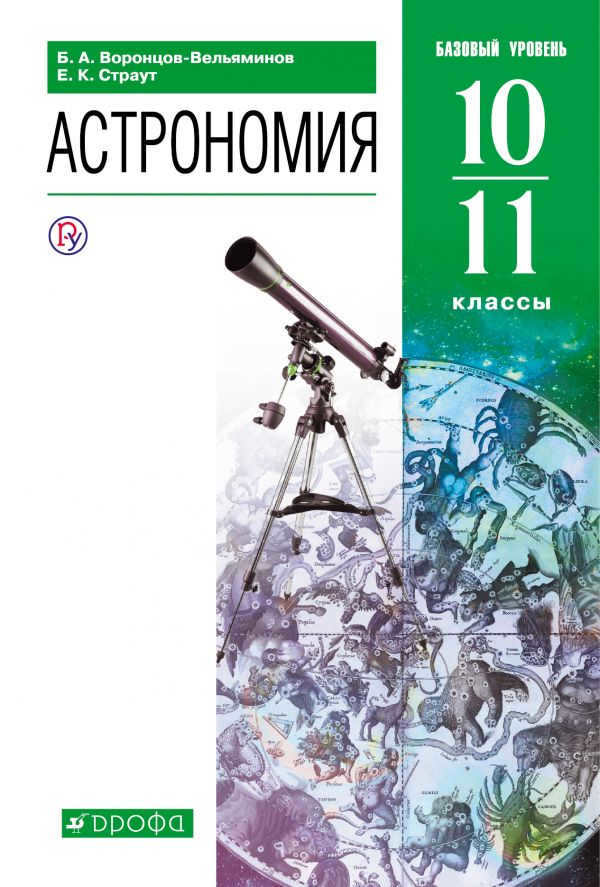
This book has been updated to meet the requirements of the federal state educational standard for secondary general education. It is a revised version of the well-known textbook “Astronomy. Grade 11” by B.A. Vorontsov-Veliaminov. The classic structure of the educational material is retained, with a focus on the current state of science. The latest data from spacecraft and modern large ground and space telescopes are included in the book, providing new insights into the study of celestial bodies.
THE MYTH OF PHAETON
The ancient Sumerians were among the first to propose the existence of a planet situated between Jupiter and Mars, which was believed to have been shattered into many smaller fragments. This same myth was recounted in the epic poem “Metamorphoses” by Ovid, a Roman poet from the early Christian era. However, the origins of such speculations among ancient peoples who lacked telescopes remains a mystery.
Modern science fiction writers have capitalized on these ancient legends, incorporating them into tales of a phantom planet known as Phaeton, destroyed by its own power-hungry inhabitants who sought to play gods. Notable examples include Alexander Kazantsev’s novel “The Phaetons” and Mikhail Chernolussky’s work “Phaeton”. In 1972, an animated film titled “Phaeton – Son of the Sun” was also released, further popularizing the myth.
However, contrary to ancient tales and folklore, contemporary scientists hold the belief that the asteroid belt is not the remnants of a destroyed planet, but rather a collection of protoplanetary matter that failed to coalesce into a fully formed planet due to the gravitational influence of the massive Jupiter.
ASTEROID. IS THE THREAT REAL OR IMAGINARY?
An asteroid refers to a small celestial body resembling a planet, with a diameter exceeding 10 meters, that orbits the Sun.
Presently, within the solar system’s asteroid belt, there exists a multitude of asteroids. The asteroid belt is home to approximately 800,000 space objects, with 500,000 having their orbits calculated and assigned numbers, and around 21,000 having been given proper names.
Although the concept of Earth colliding with an asteroid is often depicted in disaster movies like “Armageddon” or “The Fifth Element”, the reality is that even if the unpredictable asteroid Apophis, with a diameter of approximately 300 meters, were to collide with our green planet, it would not pose a global threat to humanity.
While the destruction would be significant in the event of a direct impact, with an explosion energy equivalent to about 586 megatons of TNT (to put it in perspective, the bomb dropped on Hiroshima had an explosion energy of only about 16-18 kilotons), the consequences would not be irreparable, such as an “atomic winter” or the extinction of mankind as we saw during the time of the dinosaurs.
DWARF PLANETS
In 2006, the International Astronomical Union introduced a new classification of celestial objects in the Solar System called dwarf planets.
According to the definition, a dwarf planet must meet the following criteria:
- It must have a spherical shape, indicating hydrostatic equilibrium.
- It must be unable to clear its orbit of other small bodies.
- It must not be a satellite of any other celestial body.
- It must orbit the Sun on its own path.
At present, there are five recognized dwarf planets in the field of astronomy. They are Pluto, Ceres, Makemake, Erida, and Haumea.
COMETS
A tailed star appearing in the sky evoked superstitious fear among ancient civilizations and was believed to be a sign of impending disaster, such as pestilence, famine, and other misfortunes. In Greek mythology, comets were depicted as a head with flowing hair, and the name “cometis” (meaning “hairy” in Greek) was derived from this portrayal of the celestial object.
- The head of a comet consists of a nucleus and a coma.
- The tail of a comet is formed by a trail of dust and gas that becomes visible as the comet approaches the Sun, due to the scattering of sunlight in the cometary matter.
Comets are classified into two categories: short-period comets (with an orbital period of up to 200 years) and long-period comets (with an orbital period exceeding 200 years).
The most extensively studied celestial object in our solar system is Halley’s Comet. Thanks to the extensive research conducted by Newton, scientists have acquired the ability to accurately calculate the trajectories of comets. By performing complex calculations, Edmond Halley successfully determined the paths followed by various comets that had previously been observed, and he made the remarkable discovery that several of these comets shared striking similarities. Based on this observation, he hypothesized that these comets were in fact one and the same, with a recurring orbital period of approximately 76 years.
Historical records indicate that this particular comet was first documented in 1531, followed by subsequent sightings in 1607 and 1682. However, it was not until 1758, long after Halley’s passing, that the comet reappeared in the night sky exactly as predicted by the esteemed scientist. In honor of his groundbreaking research and accurate predictions, this comet was named after Halley.
The astronomers were disappointed with the last sighting of Halley’s Comet in 1986, as the Sun obstructed the earth’s view of the comet’s perihelion, the point at which the comet is brightest and its tail is longest. However, they are now eagerly anticipating its return in 2061, which is expected to be even more spectacular. For a more comprehensive exploration of this topic, refer to page 118 of the textbook “Astronomy” edited by B.A. Vorontsov-Veliaminov, which includes an animated video.
METEORS. BOLIDES. METEORITES.
Those who have a penchant for making wishes equip themselves with binoculars and gaze upwards at the nocturnal heavens in the anticipation of catching a glimpse of a shooting star. And the vast expanse of the cosmos never disappoints them: on cloudless nights, sporadically, a brilliant streak cuts through the celestial tapestry.
Nowadays, even a middle school student would be able to explain that this enchanting spectacle is simply a meteoroid descending and incinerating within the atmosphere. However, in ancient times, this extraordinary natural phenomenon cast people into a state of awe. Occasionally, the heavens bestow an abundance of shooting stars upon us. And this signifies that the Earth is traversing through a meteor shower.
What distinguishes a meteor, bolide, meteorite, and meteoroid?
A meteoroid, or meteoroid, is a diminutive pebble, a fragment of an asteroid, a grain of sand that descends into the Earth’s atmosphere.
A meteor is an event characterized by a bright streak in the night sky or the path left behind by a meteoroid as it travels through the Earth’s atmosphere.
A bolide is a type of meteor that is particularly bright. It has a brightness greater than -4 magnitudes on the stellar scale.
One example of a large bolide that could be seen during the daytime is Benešov, which had a luminosity of -21 magnitudes on the stellar scale. To put this into perspective, the brightness of the Moon is also -21 magnitudes, while the Sun has a brightness of -26 magnitudes.
Meteorite is a space object that survives the journey through the atmosphere and falls to Earth.
Sometimes meteoroids do not completely combust in the atmosphere, but descend to Earth, carrying with them extraterrestrial metal. Resourceful thrill-seekers discovered the art of manipulating meteoric iron during the Bronze Age, well before mankind mastered the process of extracting metal from ore.
The extraterrestrial metal acquired a mythical status and was regarded as a divine bestowal, with weapons forged from it being deemed sacred. Only esteemed figures such as leaders, pharaohs, and shamans were deemed worthy of wielding blades crafted from such extraordinary iron.
A minor planet is a term used to describe small celestial bodies that are observed in the solar system and its surrounding areas. These objects typically have orbits that are located between Jupiter and Mars. In terms of cosmic proportions, they are quite diminutive, with the largest of them having a diameter of only a few hundred kilometers. Due to their small size, these cosmic bodies can only be observed with the aid of a telescope. Each minor planet in the solar system follows its own specific orbit, which remains constant for millions of years.
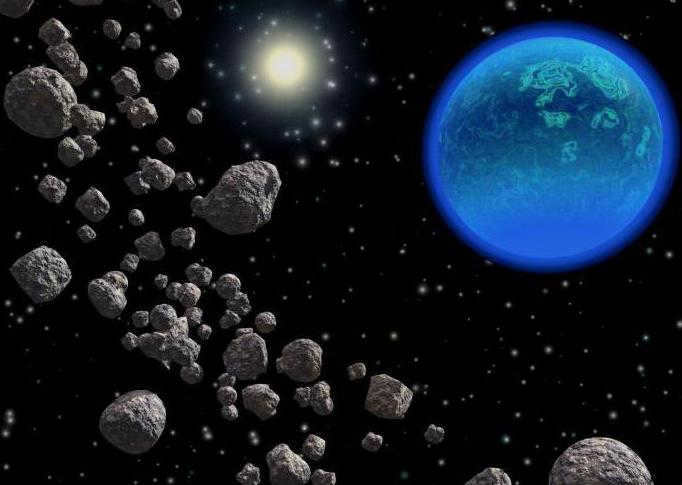
Initial findings
Credit for the discovery of the small planets goes to Italian astronomer Giuseppe Piazzi. In 1801, he observed the movement of an unidentified star-like object across the celestial sphere. Subsequently, the object’s orbit was calculated by German mathematician Gauss. It was revealed to be a highly elongated ellipse, with the Sun as one of its foci. For a considerable period of time, this newly-found celestial body was classified as one of the traditional planets within the solar system.
Asteroid
Scientists were unable to reach a consensus on how to classify the mysterious celestial object. This newfound entity was not a star since it did not emit its own light. It also could not be categorized as a planet, as telescopes revealed planets as disk-like shapes. Furthermore, it did not fit the characteristics of a comet, as it did not display the typical tail seen in observed comets within the Solar System. Eventually, William Herschel coined a fitting name for these novel objects. They were named asteroids, which translates to “star-like.”
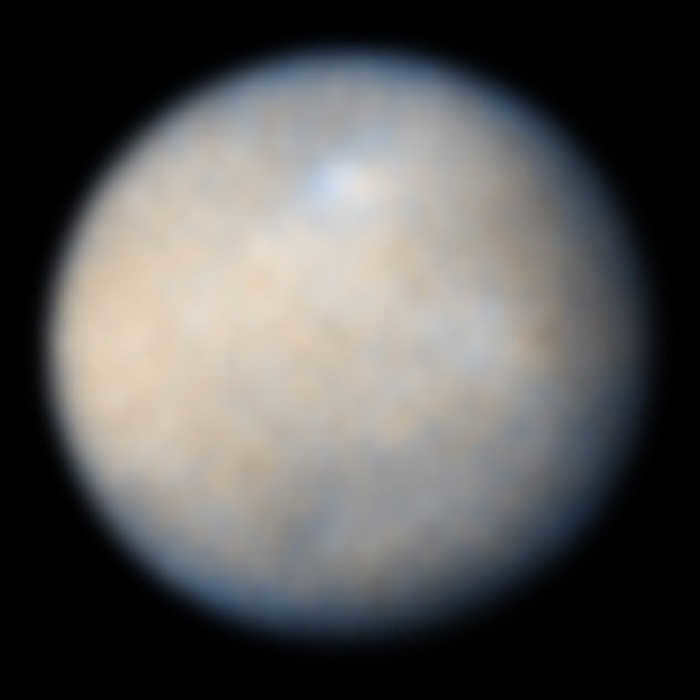
The dimensions of the recent entity were of such insignificance that it couldn’t be categorized as either a comet or a planet. Therefore, a brand new designation, “small planet,” was assigned to it. The original discoverer personally chose the name for the inaugural entity, which was Ceres, in homage to the ancient Roman goddess of fertility. Subsequently, several more similar celestial entities were unearthed, and they were christened Vesta, Pallas, and Juno. Each one of them falls into the classification of “minor planet.”
Asteroids and the Advancement of Technology
In the late 1800s, astronomers found a new tool in their quest to study the cosmos: photography. By taking long-exposure images of the night sky, they were able to capture asteroids as streaks on the photographs, easily distinguishing them from real stars and planets. This breakthrough led to the discovery of numerous small planets of varying diameters and sizes. The majority of these asteroids were found in a region between Mars and Jupiter, known as the “asteroid belt”. Over time, scientists have identified over 20,000 asteroids of different shapes and sizes.
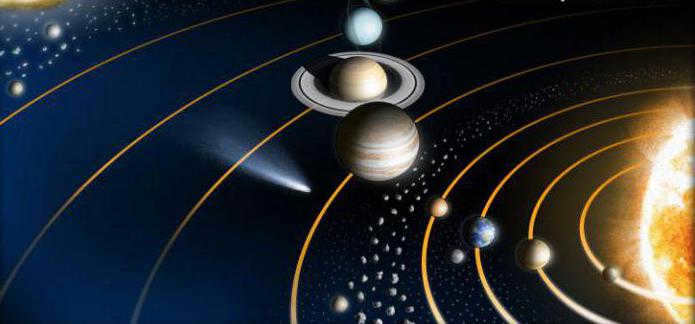
The most luminous asteroid
Vesta is the most luminous minor planet. It possesses a stellar magnitude of six, making it visible without the need for additional optical instruments. There are numerous asteroids with star magnitudes of 7, 8, and 9 that can be observed with binoculars. However, to observe smaller celestial bodies within the asteroid belt, a specialized instrument, such as a telescope, is necessary. Through the use of a telescope, asteroids of varying shapes and sizes can be observed in great detail. Among them, there are countless celestial bodies that have yet to be named.
Discovering New Asteroids and Naming Them
Anyone has the opportunity to try their luck and make a groundbreaking discovery in the realm of celestial bodies, even if it’s as small as a planetoid. While names like “Athens” and “Hetera” were coined by esteemed scientists, it’s not a strict requirement. Interestingly, NASA is currently encouraging amateur astronomers to join the search for new asteroids, offering the chance to have their names forever associated with these cosmic wonders.
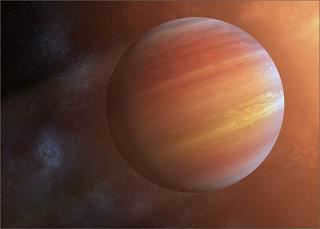
Sizes of small planets
The sizes of the initial small planets that were found were determined through direct measurements. Ceres was considered the largest asteroid until 2006, with dimensions of 900×975 km. Two other significant asteroids, Pallada and Vesta, which were discovered shortly after, have diameters of approximately 500 km at their widest point. While the surface details of these celestial bodies cannot be discerned, the observed variations in brightness and polarization of light are most likely attributed to the inherent rotation of these celestial bodies. Generally, minor planets range in size from a few kilometers to several tens of kilometers.
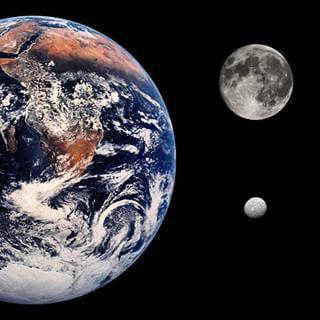
The image above illustrates the relative dimensions of the Moon, Vesta, and Ceres. It is evident that the small planet is considerably smaller than our satellite, making the Moon appear gigantic in comparison. Interestingly, Vesta and Ceres are considered some of the largest small planets in our solar system. This leaves us wondering about the even smaller asteroids.
The tiniest planet
The tiniest planet within the solar system is the asteroid Dactylus. This piece is a satellite of the asteroid Ida, which itself is not even close to being a giant. Dactyl is currently the smallest planet in the solar system. It is a rather fascinating object that does not orbit around the sun or a planet, but around a remarkably small asteroid. In the past, scientists never considered the possibility of a small planet with limited mass and gravitational force having its own satellite. However, Dactyl continues to circle Ida, as it has done for countless millions of years, compelling astronomers to seek explanations for this enigma.
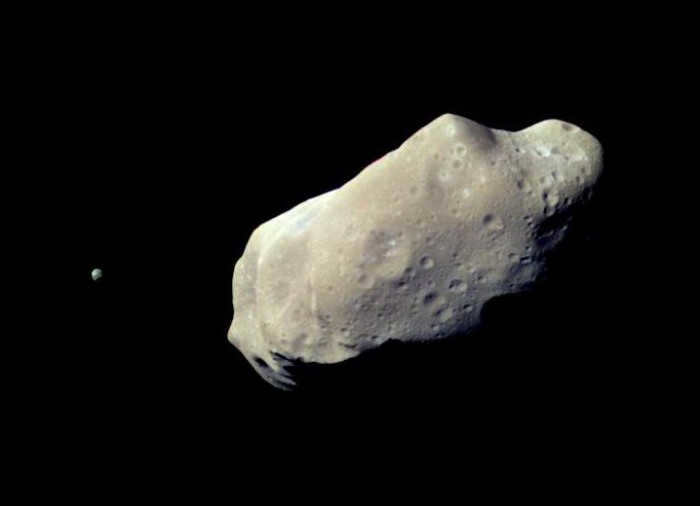
Mercury is the tiniest planet among the Earth-like planets. This celestial object revolves around the Sun in a direct orbit.
The emergence of diminutive planets
It is theorized that following the formation of the Sun, a cloud of gas and dust surrounded our star. This debris encircled our star and gradually merged into sizable blocks of rock and ice. These fragments were known as planetesimals. If the blocks were sufficiently large, they possessed their own gravitational force, attracting smaller surrounding bodies towards the future planet. The potential planets consolidated, amassed mass, and established their own orbit around the Sun.
According to the widely accepted theory, it is believed that small planets are the remnants of the very raw materials from which normal-sized planets were created. They ran out of enough raw materials to form larger celestial bodies. However, recent research has indicated that the process of planet formation in our solar system may still be ongoing. The small planet Lutetia has recently surprised scientists by revealing a well-formed metal core beneath its dusty surface – a crucial characteristic of a planet. It remains to be seen whether Lutetia will remain classified as an asteroid or if it will accumulate enough mass over time to become a full-fledged planet.
There is a different theory that proposes the presence of an additional planet similar to Earth that orbits in the space between Jupiter and Mars. However, strong tidal forces caused this celestial object to break apart, resulting in it fragmenting into multiple pieces. Over the course of time, due to the influence of comets and the gravitational pull from nearby planets, these pieces have dispersed and now make up what is known as the asteroid belt.
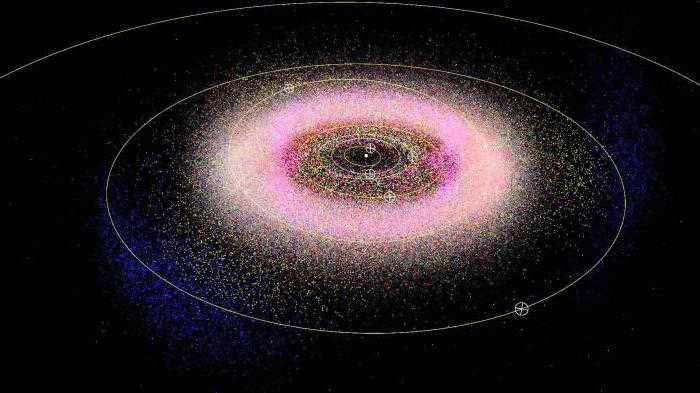
Classification by the International Astronomical Union
Asteroids are categorized based on their size, with this parameter being one of the most significant. At present, all small planets with a diameter exceeding 100 km have been discovered, with 26 of them having dimensions greater than 200 km.
Larger celestial bodies within the Solar System have a radius exceeding 800 km. As a result of their own gravitational force, they gradually assume a spherical shape, and some even possess an atmosphere. These space entities are classified as planets, despite some of them being relatively small in size.
The International Astronomical Union has officially settled the debate over which small planet should be classified as a dwarf planet and which should be classified as an asteroid. As a result, the celestial objects in our solar system are now categorized into three distinct groups:
– Small bodies within the solar system.
Based on this categorization, every planet possesses enough mass to generate its own gravitational field, and as a result of gravitational forces, their shape is expected to be nearly spherical. Furthermore, the vicinity surrounding a planet must be free from any remnants originating from other celestial bodies. Celestial bodies that fail to clear their orbit from debris are classified as dwarf planets. Currently, Pluto, Ceres, Haumea, and a few others fall under the category of dwarf planets. All remaining entities within the Solar System, such as asteroids, comets, and transneptunian objects, are designated as small bodies within the Solar System.
Scientists used to believe that there were only nine planets in the solar system for a significant period of time. Nevertheless, the field of astronomy underwent a significant change in 2006. During that time, one of the planets, namely Pluto, was no longer considered a full-fledged planet and was reclassified as a dwarf planet. Consequently, the solar system now contains numerous planets that fall under this category. However, experts in the field assert that there are only five recognized dwarf planets, which are Pluto, Ceres, Makemake, Erida, and Haumea.
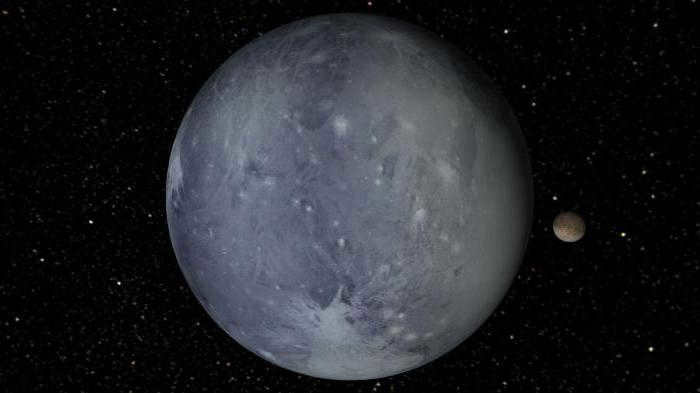
Pluto is the most famous small planet
Pluto is positioned 6 billion kilometers away from the Sun. This planet was discovered unintentionally by a researcher named Clyde William Tombaugh. However, scientist Percival Lovell had already theorized the existence of Pluto 15 years before its accidental discovery. Pluto is the coldest celestial body within the solar system, with a surface temperature of -223 degrees Celsius. Now classified as a dwarf planet, Pluto has a diameter of 2374 km.
Pluto’s surface is adorned with contrasting streaks, both dark and light in nature. These unique markings are believed to be deposits of frozen methane. The darker streaks are indicative of older gas deposits. According to scientific research, the entire planet is enveloped in a layer of frozen methane, contributing to its frigid surface temperatures that plummet to as low as -230 degrees Celsius.
Pluto’s atmosphere is composed solely of three key chemicals – argon, methane, and neon gases. This gaseous envelope can be divided into two distinct parts, with an aerosol layer separating them. Despite the summer season, the planet’s temperature remains exceedingly cold, with the mercury barely reaching -209 degrees Celsius.
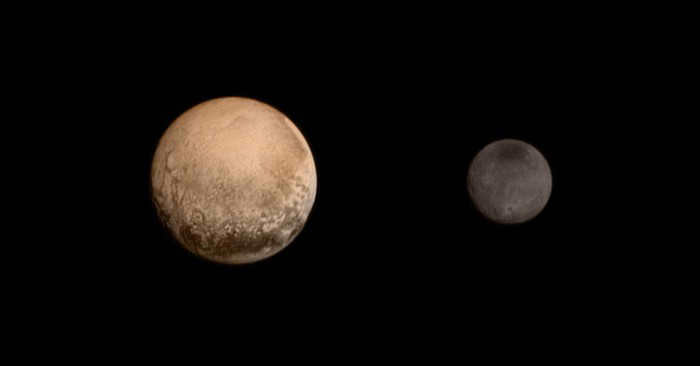
Research on Objects Beyond Neptune
Astronomers have long speculated that the area above Neptune’s orbit is not as empty as it appears. They hypothesized the existence of a belt containing unknown celestial bodies. In 1992, this hypothesis was confirmed when astronomers observed a new object, later classified as a “dwarf planet.” Over the next few years, additional similar planets were discovered, and by 1996, the number of known celestial bodies in this region reached 32. As of now, astronomers have identified over a thousand transneptunian objects.
Researchers have labeled this collection as the Kuiper belt. One of these members, the dwarf planet Eridus, even surpasses Pluto in size. This presented a dilemma for scientists: either expand the list of planets in our solar system to include over a thousand objects or strip Pluto of its planet status. Ultimately, astronomers opted for the latter option, designating these smaller celestial bodies as dwarf planets.
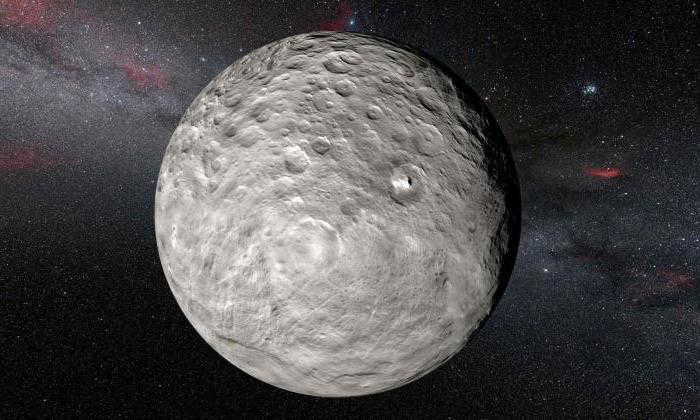
Erida: The Planet of Discord
In the year 2006, scientists made a controversial decision by reclassifying Pluto as a dwarf planet. This decision, made by California astronomer Michael Brown, sparked a great deal of debate and disagreement. Interestingly, the name given to this celestial body seems to perfectly reflect the ongoing controversy. Erida, the name of the planet, is derived from Greek mythology and refers to the goddess of discord and quarrels. In Greek mythology, Erida played a pivotal role in causing jealousy among the gods, ultimately leading to the infamous Trojan War. Similarly, the dwarf planets of our solar system have become a point of contention among astronomers and scientists.
The celestial body Dysnomia is the sole satellite of the planet. This celestial body shares its name with the daughter of an ancient Greek goddess, whose role in mythology symbolized chaos and disorder. In terms of physical dimensions, Erida is comparable to Pluto, but it possesses a greater mass, exceeding that of the former planet by a quarter. Erid completes its orbit around the sun in a span of 557 years.
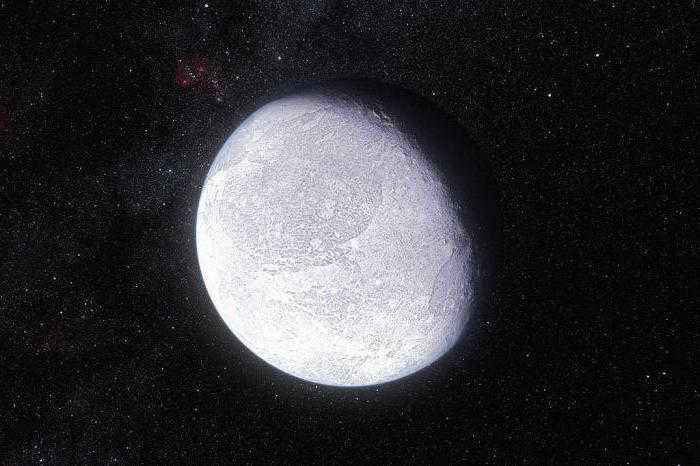
Haumea: A Dwarf Planet
What is the number of dwarf planets in our Solar System? The International Union of Astronomers acknowledges the dwarf planet status for five celestial bodies: in addition to Pluto and Erida, they consist of Ceres, Makemake, and Haumea. Nevertheless, scientists tentatively assign around 40 more objects to this category.
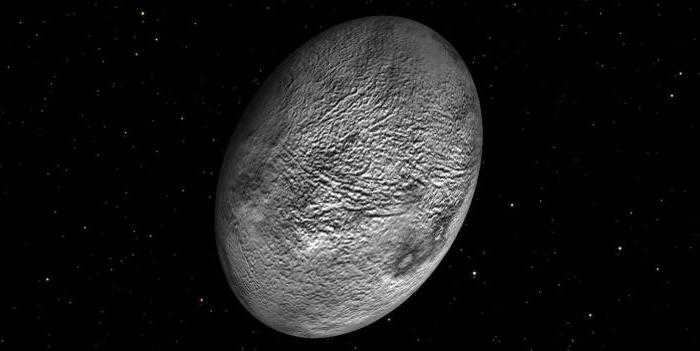
Astronomer Brown discovered the dwarf planet Haumea in 2004. In terms of size, Haumea’s transverse diameter ranges from 1212 to 1491 km, putting it in a similar range as Pluto. However, Haumea’s shape is not round like most planets, but rather elongated, resembling an American soccer ball. Haumea completes one rotation on its axis every four hours. The planet derives its name from the Hawaiian goddess of fertility. Approximately three-quarters of Haumea’s surface is covered in ice. It takes Haumea 283 years to complete one orbit around the sun.
The Planet Makemake
In 2005, a group of astronomers led by Brown made an intriguing discovery while studying small dwarf planets. They came across a celestial body that they named Makemake, after a fertility deity worshipped in Polynesia. Makemake’s orbit is even more distant than that of Pluto, taking it 310 years to complete a revolution around the Sun. This dwarf planet holds the distinction of being the second brightest object in the Kuiper Belt. Scientists also speculate that Makemake is covered with a thick layer of frozen methane.
Ceres, the first dwarf planet to be discovered, lies between Mars and Jupiter
Many individuals are curious about which planet is classified as a dwarf planet but is not part of the Kuiper belt. The answer is Ceres, which orbits between Mars and Jupiter. It takes Ceres 4.6 years to complete one revolution around the sun, the central luminary of our solar system. Ceres is the largest celestial body within the asteroid belt. It was named a dwarf planet after the ancient Roman goddess associated with motherly love and fertility. Ceres was first observed in 1801 by Italian scientist Giuseppe Piazzi. Modern astronomers believe that Ceres is a rocky core covered by a layer of water and ice.
- A minor planet is a small celestial body that orbits the Sun, distinguishing it from the larger planets.
Before 2006, the term “minor planets” was used interchangeably with “asteroids,” but on August 24, 2006, the International Astronomical Union (IAU) officially defined the term “planet” for the first time. Pluto, previously considered the ninth planet in the solar system, did not meet this new definition, so the IAU reclassified it as a dwarf planet, along with Erida and Ceres.
Therefore, minor planets encompass both dwarf planets and asteroids, but do not include comets or bodies with a diameter smaller than 30 meters, known as meteoroids. Unlike the terms “planet,” “dwarf planet,” and “small bodies of the solar system,” the term “minor planet” is not an official designation.
Related concepts
The Minor Planet Center (MPC) is situated at the Smithsonian Astrophysical Observatory (SAO), which is a part of the Harvard-Smithsonian Center for Astrophysics (CfA) in conjunction with Harvard University Observatory (HCO).
A comet (derived from the Greek word κομήτης, komḗtēs – hairy, oblique) is a diminutive celestial object. It is colloquially referred to as “with long hair”. The name was assigned due to the physical appearance of this celestial body. A comet possesses a distinct “head” and an elongated “tail” resembling hair. In the past, the sight of comets instilled fear in people as they were believed to be omens of plague, war, and death.
The Trojan asteroids of Jupiter consist of two large groups of asteroids that orbit the Sun near the Lagrangian points L4 and L5 of Jupiter. These points are in a 1:1 orbital resonance with Jupiter. These asteroids are named after characters from the Trojan War, which is described in the Iliad.
The Kuiper belt, also known as the Edgeworth-Kuiper belt, is a region of the Solar System that extends from the orbit of Neptune (30 a.u. from the Sun) to about 55 a.u. from the Sun. The Kuiper belt is similar to the asteroid belt, but it is much wider and more massive. In fact, it is about 20 times wider and 20 to 200 times more massive than the asteroid belt. Like the asteroid belt, the Kuiper belt is composed mostly of small bodies that are remnants from the formation of the solar system. However, unlike the objects in the asteroid belt, which are primarily made up of rocks and metals, the composition of the objects in the Kuiper belt varies.
References in literature
Asteroids. Among the smaller objects in the Solar System, asteroids, also known as small planets, have been extensively studied. The exploration of these celestial bodies dates back over two centuries. On the night of January 1, 1801, Giuseppe Piazzi made the first discovery of a small planet, which was later named Ceres.
By 1890, a total of 300 minor planets had been identified, and between 1890 and 1927, an additional 2,000 planets were found! These small planets, mostly orbiting between Mars and Jupiter, became known as asteroids.
Therefore, scientists have identified 9 large planets and numerous small ones, such as asteroids, within the solar system. However, that is not all. The solar system also encompasses a vast number of other celestial bodies, including meteorites and comets, which are found in the space surrounding the Sun.
For instance, the Kepler-11 system has discovered five planets with masses that range from two to eight times the mass of Earth, along with a larger sixth planet that is slightly bigger than Neptune. Based on their apparent size, all of these planets seem to have a low density, ranging from 0.6 to 1.7 g/cm?. Additionally, they are all located very close to their star: the orbits of the five smaller planets are even smaller than that of Mercury, while the sixth planet’s orbit fits inside Venus’ orbit. The Kepler-11 star itself is quite similar to the Sun in terms of mass, spectral class, and luminosity, although it is older, being approximately 8 billion years old (Fig. 2.4).
Past Mars, the realm of Earth-like planets comes to an end. Between Mars and Jupiter lies the Main Belt of asteroids, also known as small planets. After that, we encounter the immense Jupiter, the slightly smaller Saturn, and even farther away are Uranus and Neptune, which were unknown to the people of ancient times. Uranus was identified by the esteemed British astronomer William Herschel in 1781, while Neptune was found in 1846. Interestingly, Neptune was first mathematically predicted by both John Adams and Urbain Leverrier, and only later confirmed through actual observation. Lastly, Pluto was discovered in 1930 by a young astronomer named Clyde Tombaugh.
Additional Concepts (Continuation)
When a new asteroid is discovered, it is assigned a temporary designation, which is a unique alphanumeric code representing the year and month of its discovery. After completing all necessary verifications and calculating the asteroid’s orbit, it is then assigned an official serial number for cataloging purposes. If deemed necessary, the asteroid may also be given its own unique name.
An astronomer (sometimes referred to as an astronomist) is a scientist who specializes in the field of astronomy.
According to the definition established by the XXVI Assembly of the International Astronomical Union in 2006, a dwarf planet is a celestial body that.
Centaurs represent a cluster of asteroids situated between the orbits of Jupiter and Neptune. They possess characteristics that are intermediate between main belt asteroids and Kuiper belt objects, and they also share some similarities with comets. Due to their orbits intersecting with those of the giant planets, centaurs have unstable and often highly stretched orbits. Consequently, their lifespan is limited to just a few million years as the gravitational force exerted by the major planets eventually causes them to be expelled from their original orbits.
The term “solar system small body” was coined by the International Astronomical Union in 2006 to categorize objects within the Solar System that do not fall into the categories of planets, dwarf planets, or their respective satellites.
Amateur astronomy is a popular pastime that involves the observation, filming, and study of various astronomical objects and phenomena.
The time it takes for a space object to complete a full revolution around its axis relative to the stars is known as its rotation period.
Jupiter, the largest planet in the Solar System, is the fifth farthest planet from the Sun. It is classified as a gas giant, along with Saturn, Uranus, and Neptune.
An asteroid, which was commonly referred to as a small planet until 2006, is a relatively small celestial body in the Solar System that orbits the Sun. Asteroids are much smaller and less massive than planets, and they have an irregular shape and no atmosphere, although they can have satellites.
A near-Earth object is an object in the Solar System that has an orbit that passes very close to Earth. The perigee, or closest point, of all near-Earth objects is less than 1.3 astronomical units (a.u.).
An astronomical observatory is a facility used to observe and study celestial phenomena.
When an object’s observational arc is too short to accurately predict its future position, it is considered lost as a minor planet. In the past, many asteroids (a type of minor planet) were thought to be lost but were later rediscovered in the 1980s and 1990s. However, there are still a number of minor planets that remain lost. According to some definitions, there are potentially thousands, if not tens of thousands, of little observed minor planets that are not visible.
Atoms are a group of near-Earth asteroids that have orbits intersecting the Earth’s orbit from the inner side. These asteroids have a greater distance from the Sun at aphelion than the Earth’s perihelion distance, with a value of Q > 0.983 a.e. Additionally, their major semi-axis is even smaller than the Earth’s. (Read more: Leiden Observatory)
The observation arc refers to the period of time between the initial and most recent observations that track the path of an object. Typically, this interval is measured in days or years. This term is commonly used when discussing the identification and monitoring of asteroids and comets.
A light curve is a representation of the variation in an astronomical object’s brightness over time. It can be applied to both self-illuminating objects like stars, as well as objects that reflect the light of a nearby celestial body such as the Sun or a star. Examples of such objects include planets, their moons, asteroids, and others.
Kirkwood gaps are specific regions within the asteroid belt that result from the gravitational influence of Jupiter. These gaps are notably lacking in asteroids.
A phenomenon in astronomy known as asteroid coverage occurs when an asteroid passes in front of a light source, typically a star, as it moves across the sky. These occurrences happen daily around the globe, with an average of one instance each night where a star brighter than 13 star magnitude is covered by a previously cataloged asteroid.
Celestial mechanics involves the study of orbital resonance, which occurs when the periods of revolution for two or more celestial bodies are related by small whole numbers. This causes the bodies to periodically come close to each other at certain points in their orbits. The resulting gravitational interaction between these bodies can lead to stable orbits.
A binary asteroid is a pair of asteroids that are gravitationally bound together and rotate around a shared center of mass, similar to a binary star system. The first binary asteroid to be discovered was asteroid (243) Ida, which was identified as a binary system during a flyby by the Galileo spacecraft in August 1993. Since then, numerous binary systems have been found within the asteroid belt.
An asteroid satellite is an asteroid that orbits another asteroid, much like a natural satellite orbits a planet. The satellite and its host asteroid are held together by their mutual gravitational attraction. If the size of the satellite is comparable to the size of the asteroid, the system is referred to as a double asteroid. There are also triple-component systems known, such as the large asteroids (45) Eugenia and (87) Sylvia, the asteroid Apollo (136617) 1994 CC, and the large trans-Neptunian object (47171) 1999 TC36, among others.
Cupids refer to a collection of near-Earth asteroids that have orbits located entirely outside the Earth’s orbit. This means that their distance from the Sun when at perihelion is greater than the Earth’s aphelion distance, but less than 1.3 AU. 1.017 a.e. For more information, you can visit the Yerkes Observatory website.
Mercury holds the distinction of being the planet closest to the Sun in our Solar System. It is also the smallest among the terrestrial planets. Its name is derived from the ancient Roman god of commerce, Mercury, known for his swift movements through the celestial sphere, surpassing the speed of other planets.
Apollo is a collection of asteroids that are located near Earth and have orbits that intersect the Earth’s orbit from the outer side (their distance from the Sun at perihelion is less than the Earth’s aphelion distance, q 1 a. e.). Although their orbits generally lie outside the Earth’s orbit, they still cross it in the Earth’s aphelion region. According to tradition, this group of asteroids was named after the first asteroid discovered in it.
Uranus is a planet within our Solar System, ranking seventh in distance from the Sun, third in terms of diameter, and fourth in terms of mass. It was first observed in 1781 by the English astronomer William Herschel and was named after the Greek god of the sky, Uranus.
Athyrs is a collection of asteroids that reside entirely within the Earth’s orbit. These asteroids have an aphelion distance from the Sun that is smaller than the perihelion distance of Earth. They are believed to be remnants of small planets that have collided with Earth.
As it is widely known, the Earth’s sphericity has been proven a long time ago, which is supported by space imagery. All major celestial bodies, including planets like the Sun and other stars, possess the same spherical shape. It has been accurately determined that the Earth’s shape deviates slightly from a perfect sphere: the distance from the Earth’s center to the equator measures 6,378 km, while the distance from the center to the poles is 22 km shorter, measuring 6,356 km. The Earth’s circumference measures a staggering 40 thousand km, a distance that would take an individual approximately 5 years to traverse on foot. Despite its immense size, Earth is not the largest planet within our solar system. In fact, the smallest planet, Mercury, is more than twice as small, while the largest planet, Jupiter, is a staggering 11 times larger than Earth. Jupiter’s shape can be observed on a smaller replica known as a green globe, which takes the form of a sphere. This sphere showcases continents, islands, oceans, and seas, all of which bear a striking resemblance to their counterparts on Earth, albeit on a greatly reduced scale.
Asteroids are celestial objects that can be found throughout the solar system, varying in size from several hundred kilometers to minuscule dimensions measuring just a few tens of meters. The discovery of new asteroids is primarily conducted by astronomers who possess sophisticated telescopes capable of locating these elusive entities. Once a new asteroid is identified, it is assigned a unique serial number and, upon the request of the discoverer, may also be given a name. In contrast to asteroids, the names of minor planets are typically proposed by their discoverers and subsequently endorsed by the esteemed organization known as the Minor Planet Center (MPC). As a result, catalogs of asteroids often feature a diverse array of names, ranging from those of influential scientists and engineers to renowned writers and composers, as well as notable artists, doctors, and even mythological or literary figures. Interestingly, there have been no documented instances of individuals purchasing the right to name an asteroid.
Jupiter, the largest planet in our solar system, has a diameter of 142,984 kilometers, which is equivalent to 11.21 times the diameter of Earth. It also has a massive weight of 1,898.8 sextillion tons, which is approximately 317.83 times the mass of Earth. In fact, Jupiter is so massive that it could contain all the other planets in our solar system within its boundaries.
On the other hand, Pluto used to hold the title of the smallest planet until August 2006. It has a diameter of 2390 kilometers, which is 5.3 times smaller than Earth’s diameter. In terms of mass, Pluto weighs 15 quintillion tons, making it 400 times lighter than Earth. However, after 2006, Pluto was reclassified as a dwarf planet, and now the smallest planet in our solar system is Mercury.
Mercury, with a diameter of 4878 kilometers, is 2.7 times smaller than Earth. It has a mass of 330 quintillion tons, which is 18.1 times lighter than Earth. Despite its small size, Mercury is still considered a planet and plays an important role in our solar system.
Despite the fact that the Earth is located in the asteroid danger zone and the entire solar system is teeming with space objects of various sizes, ranging from large rocks to small planets, our planet faces approximately 10,000 different space objects. However, thanks to modern science and technology, mankind has the ability to ensure its safety.
Many of us were unaware that in the early hours of April 25, 2016, two large celestial objects passed close to the Earth. This alarming information was announced by the “Minor Planet Center” of the International Astronomical Union. According to the International Astronomical Union, these unexpected visitors from space were two asteroids that came within a distance of just 10 million kilometers from our planet.
It has been discovered that the paths followed by electrons are significantly distinct from the paths followed by the planets in our solar system, and this is due to the wave-like nature of electrons. It is not accurate to compare an atom to a miniature planet, as we should not envision particles orbiting around the nucleus, but rather we should think of them as probability waves. As we will explore further, quantum mechanics definitively demonstrates that all the particles that compose an atom possess a dual nature: they are both waves and particles.
Viruses can be found everywhere. And as you will discover below, they are the oldest living organisms on the planet and by far the most prevalent. Humans, as a species, emerged in a world that existed billions of years before us. We have only been inhabiting this planet for a relatively short period of time, less than a few hundred thousand years. Those who were unable to adapt to the existing microorganisms became extinct, while others learned to coexist with them. It is uncertain how many populations perished due to diseases or if Neanderthals were among them. It is important to note that diseases arise when the balance is disrupted, and environmental changes occur due to poor hygiene, travel, overcrowded cities, deforestation, pollution, and close contact with other species – carriers of unknown viruses (zoonoses). Microbes that are new to the body can cause illness, while those that the body is accustomed to do not have a negative impact. In most cases, it is our own fault for becoming sick – a rather definitive statement! Let me provide a simple example: when a person catches a cold, the change in temperature creates more favorable conditions for certain viruses to replicate, leading to the development of illnesses such as rhinitis or influenza. “The cold principle” encapsulates the essence of virology! Normally, the human body maintains a well-balanced relationship with its environment; diseases only develop when the balance is disrupted or the body is exposed to unusual conditions. In such cases, conditions for viral replication arise, and we become ill.





